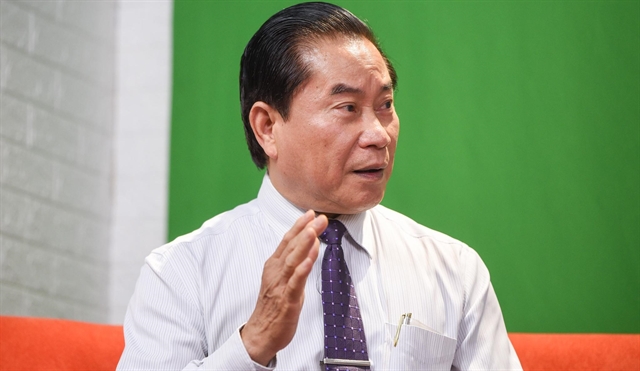 Opinion
Opinion


|
| Doctor Nguyễn Trọng An |
Doctor Nguyễn Trọng An – coordinator for the Non-Communicable Diseases Prevention and Control (NCDs Việt Nam) talks to the newspaper Nông Nghiệp Việt Nam (Việt Nam Agriculture Newspaper) on the country’s resolve to protect wild animals from hunters
As a medical expert, how do you respond to a report saying that COVID-19 is likely to have come from bats?
Following his visit to China, a representative from the World Health Organisation said there was a lot of evidence indicating the original roots of the coronavirus which has caused COVID-19 came from bats in Wuhan seafood market, a city of Hubei Province, China.
I have read quite a lot of stories relating to COVID-19 and have discussed with Professor Dr Nguyễn Huy Nga, former Director-General of the Preventive Health Department, under the Ministry of Health, on what was the main cause leading to COVID-19. We agreed that COVID-19 came from the wild Wuhan bats – the Rhinolophus species.
Besides that, according to Peter Daszak, President of the Ecohealth Alliance – a US non-profit organisation, some 15 years ago, many scientists detected that many bats living in caves in southern China had carried various virus species which were similar to the new coronavirus and the viruses which caused SARS and MERS.
According to Daszak, one of the 500 coronaviruses at that time were similar, up to 96 per cent, to the coronavirus circulating now.
This piece of information has further consolidated our assumption that the root cause of the COVID-19 which has led to the infection of more than 300,000 people and the death of thousands was wild animals, particularly the Rhinholophus bats. However, if we want to confirm Rhniholophus bats as the culprits, we need more time for scientists to conduct more research.
So besides COVID-19, do wild animals pose other dangers to human health?
More than a decade ago, people living in the Central Highlands and the southwestern region talked about a story that three or four local people died after eating the meat from a python with nine nostrils. Ten years later, scientists found out the main cause of the death of those people was poison from the python. According to scientists that giant snake had nine noses.
Recently, the American CDC and EcoHealth Alliance have issued many publications on the danger of eating wild animals and recommend people not eat wild animal meat.
So what action should we take now?
My advice is that all scientists in the world, including Vietnamese scientists and lawmakers, should work together to come up with legal documents to prohibit people from killing wild animals for eating or to sell the meat.
Besides legal documents, how else can we protect wild animals and human health?
We should raise the people’s awareness of the need to protect the wild animals while advising wild animal hunters give up wild animal hunting.
In addition, we should create a hotline to let people inform forest rangers if they detect people hunting wild animals.
It is good news that in early March, Prime Minister Nguyễn Xuân Phúc ordered the Ministry of Agriculture and Rural Development and other concerned agencies to work on a ban of buying and selling wild animals. PM Phúc also set the deadline that the document must be on his table before April 1.VNS




